
Fate/Grand Order's Avalon le Fae chapter is secretly one of the best stories in video games this year
You didn’t read that headline wrong. I’m sure a good chunk of you immediately responded with disgust and I get it. Be that as it may, I’m being completely serious and I know that sounds ridiculous.
Believe me, I understand the infamy of Fate/Grand Order to the mainstream audience. It’s a free-to-play mobile game with a gacha system and that’s enough reason to completely dismiss what I’m saying to a lot of readers. You probably know someone or someone who knows someone that has either spent or has heard someone spending a lot of money on it as they gamble for a character they want. That’s fair, I understand.
Even so, I still want to share my appreciation and fascination with a specific story arc in F/GO that was recently released in its English version. I’ve played a lot of RPGs this year and I’m shocked that this has been my favorite story out of everything I’ve played so far in 2023.
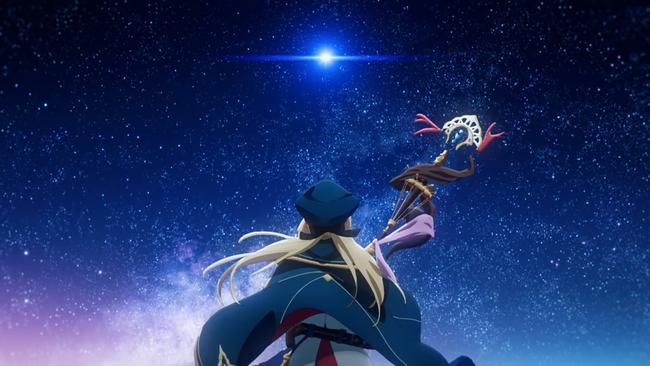
Let me be clear. I am not an active player of F/GO; I used to be for its first two years, but eventually fell off and have only started dipping my toes into it again on a whim.
Perhaps the biggest shame in what I’m about to write about has such a high barrier-of-entry. New main story chapters are not something you can just jump into immediately when you start the game for the first time. It requires completing the entire first part of F/GO, Observer on Timeless Temple, which consists of eight story chapters and a final area. Then, you’d have to start the second part, Cosmos in the Lostbelt, and go through more lengthy story arcs before finally reaching the start of Avalon le Fae, the sixth chapter of Cosmos in the Lostbelt. There’s technically a part “1.5” in-between the first and second parts of F/GO; they are skippable and can be done at a later time.
Long story short, you’d easily have to put many, many, many hours into F/GO to even begin the Avalon le Fae chapter. It makes sense why that’s the case, yet it still sucks because it is truly a hidden gem that I’ve come to love as it gripped me for hours upon hours. This particular story chapter in F/GO was written by Kinoko Nasu, the original author behind Tsukihime, Fate/stay night, Witch on the Holy Night, and several other previous F/GO chapters.
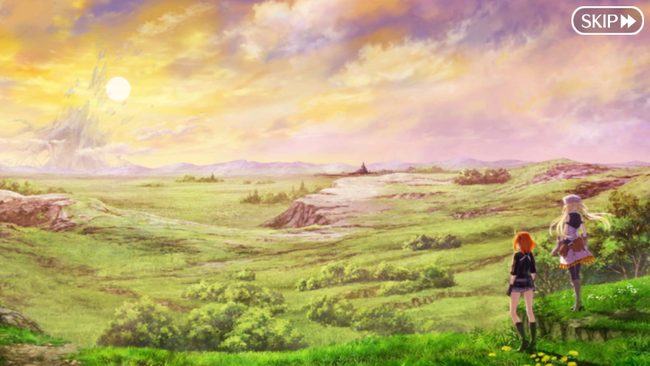
Where do I even begin?
In Cosmos in the Lostbelt, the overarching story revolves around the main group of characters entering Lostbelts to restore the world to what it used to be; in the start of this second part of F/GO, the entire world (and most of humanity) has been wiped clean as a sort of blank slate. The new main antagonist faction, the Crypters, are introduced and players learn that their goal is to cultivate their own personal Lostbelt to replace Proper Human History, the “correct” timeline that prevailed or “won” over countless possibilities. Proper Human History is the current world as we knew it before the phenomenon that obliterated it.
Wherever there’s a winner, there must also be a loser. That is basically what a Lostbelt is - an entire history of a world that “lost” to Proper Human History. It’s easy to think of these as alternative what-if scenarios of history as we know it, if a historical phenomenon or disaster improperly veered a certain region’s entire history off-course. Lostbelts are the cultural, societal, structural dead ends brought about by a domino effect that should’ve never happened and were pruned by Proper Human History. A running theme in Lostbelts is preserving the status quo of current conditions with no more advancements in higher prosperity or innovation - things are firmly stuck in their endless now.
The first Lostbelt you invade, the Russian Lostbelt, split apart from Proper Human History around 1570 AD. An asteroid hit Earth and plunged it into a new, unexpected ice age. Most of humanity died as a result. In order to keep what little humans were left, Ivan the Terrible devised a plan to keep his fellow Russians alive. He worked with his mages to combine them with magical beasts, thus creating the Yaga beastmen. Chaldea, the organization your main group works for, enters the Russian Lostbelt at a stage where hundreds of years have passed since then, so they gradually learn about the tragic past of this Lostbelt, yet still bitterly have to wipe it away entirely in order to make sure that Proper Human History is restored.
It’s not wrong to think that what the “good guys” are doing is, well, genocide on the losers of history. In the eyes of the innocent citizens and residents in those Lostbelts, they’re basically the ultimate villains.
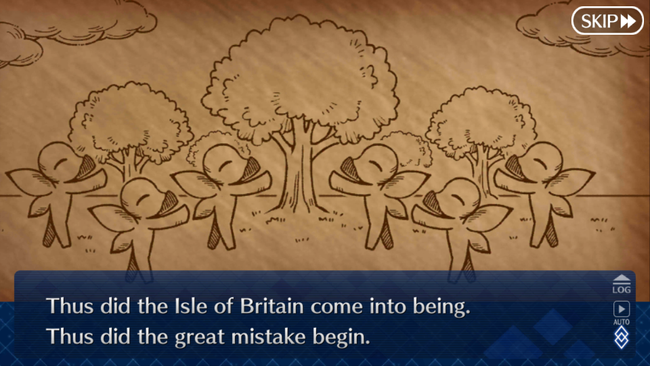
Now fast-forward beyond a plethora of plot developments later, Chaldea enters the British Lostbelt. I won’t pepper you in what happens step-by-step because that would take an eternity, so let’s focus on the overall gist of what the current predicament is.
Your group finds themselves in a Lostbelt that has already existed for 14,000 years. The history of the British Lostbelt is so extensive that on the world map for this chapter alone, there is a separate Notes section that keeps a timeline of significant events that have happened. Most of it is blank at the start and it will start filling up on its own as readers progress through its story; the final event in that timeline is when players entered the British Lostbelt. This chronology makes a distinction between the Fae Era and the Era of the High Queen; think of the former as BC and the latter as AD.
It’s easy to tell what is fundamentally wrong with this Lostbelt almost immediately - everything is inhabited and run by faeries. Humans do exist, but they’re mostly treated as inferior beings that’ve been enslaved in most parts of Faerie Britain. The land is divided up among six major faerie clans - Fang, King, Earth, Wind, Mirror, and Wing. Faeries in this Lostbelt are more than just what we typically think of when we hear ‘fairy’. Sure, some of them look like tiny people with wings, though faeries here can look like beastmen, elves, and dwarves too.
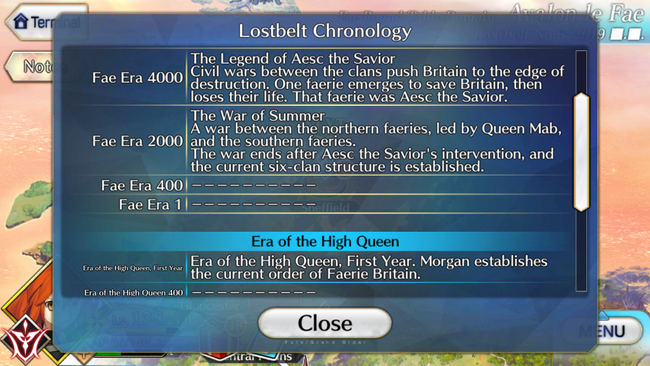
Another glaring “flaw” in Faerie Britain is the supreme ruler of the land is Morgan le Fay, King Arthur’s archnemesis from Arthurian legend. Normally, we’d expect someone like King Uther or King Arthur to be the one on the throne if this corresponded to history as we knew it. She has ruled the Isle of Britain in a cruel, cold-hearted manner for 2,000 years. Public opinion has inevitably become divisive about how she’s been running things.
Then there’s the Child of Prophecy, the main heroine of this British Lostbelt story arc that Chaldea assists as they surmise that taking down Morgan is the key to annihilating the entire Lostbelt. The Child of Prophecy is Altria Caster, someone that you might have mistaken for King Arthur at first, though she ends up being her own person entirely.
Her initial mission is to ring all the Bells of Pilgrimage throughout Faerie Britain. She has to figure out how to get the various faerie clan leaders’ permission to ring the bells they’re protecting. In doing so, she’ll receive the power to face Morgan head-on.
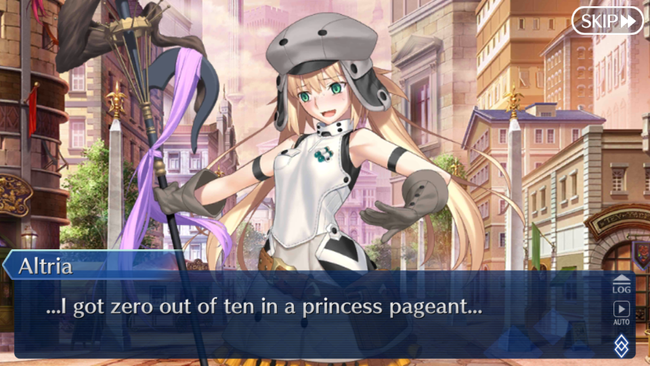
So far, terminology and lingo aside, it seems like a pretty straightforward tale - assist the chosen one to go topple the big bad queen. Simple enough, right?
As I read on, it became more and more clear how twisted this faerie tale was.
Remember how I told you that a running theme of Lostbelts was preserving the status quo? The British Lostbelt is different in this regard; Morgan certainly wants to remain on the throne for her own reasons, but she’s fairly okay with letting the faeries decide how they want to govern their territories as long as everyone continues to pay their “existence tax”, in which Morgan sucks up half the life force of the faeries annually. Those who don’t have enough magical energy die on the spot, while those who refuse to pay are either sent to Camelot to be disposed of or they flee to a place where nobody can find them.
There’s also the plot point that every single human in Faerie Britain is a clone of a single, original human being. Humans in the British Lostbelt have a set, finite, limited lifespan and cannot reproduce. That’s why there aren’t any elderly humans in this Lostbelt. Humans are groomed to be the providers of cultural and societal advancement to faeries. Unlike humans, faeries are effectively immortal and don’t get hungry.
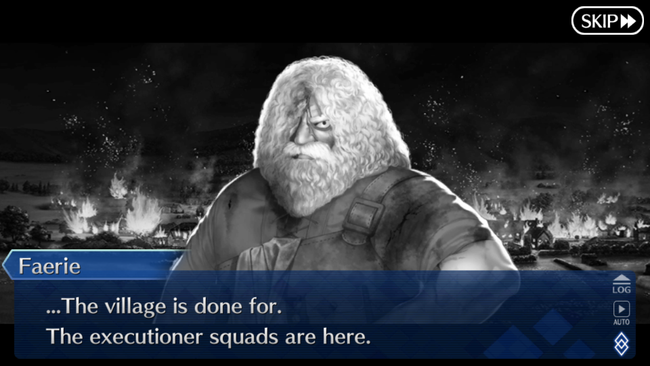
Despite this, faeries cherish humans because being around them raises their morale; humans overcome their innate flaws through invention - eating because they get hungry, practicing religion to believe in a higher power, partying to celebrate an occasion as a community, and so on. Faeries have advanced their society through mimicry. There are restaurants even though they don’t get hungry and cathedrals even though they don’t believe in a higher power. They merely enjoy the act of eating and the aesthetics of a cathedral. There isn’t a true sense of building up a society genuinely from faeries overcoming inherent traits that cause adversity. Humans in Faerie Britain are enslaved not just for labor purposes, but also something to be played with like a toy; manipulate a person enough to the point that they might break and they may come up with a new innovation to relish in.
Much of what I absolutely adore about the Avalon le Fae story arc is how well thought out the entire world is in relation to its characters. As Altria is traversing throughout Britain, readers experience what makes each locale in the Isle of Britain unique. Norwich operates differently from other towns, for example. The iron industry is booming in it and all are equal in the field of smithing iron goods there. Humans can make a living as equals to the faeries by running their own shop; successful humans even employ a faerie workforce sweatshop. Salisbury, on the other hand, is the only free city where faeries and humans are on equal ground with no major caveats.
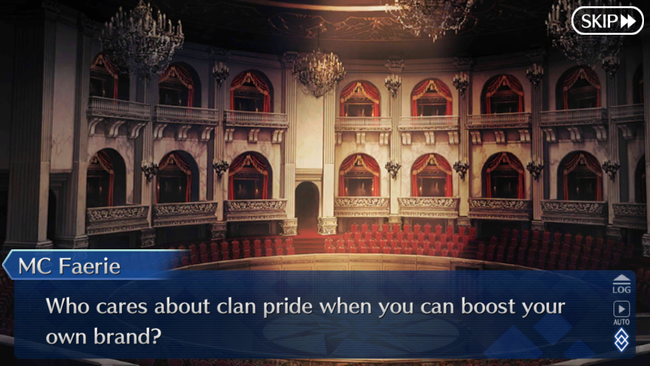
As you can see with the tiny bit of worldbuilding I described, there are a lot of plot points it’s juggling with - and that’s just the tip of the iceberg.
Altria’s journey to save Britain is not a noble cause or something that she personally celebrates. Part of her low self-confidence stems from the immense pressure that rides on her success, yet it’s more than that. Growing up, she faced a lot of discrimination and harassment from other faeries. She wasn’t born in Faerie Britain; she was a faerie from paradise - and that was something that the British faeries despised. An outsider claiming that it’s their mission to save Britain itself didn’t sit well with the native faeries.
This is one of the central themes that Avalon le Fae puts front and center. It presents the tale of an unwilling chosen one that gradually learns to carry the responsibilities she’s been tasked with - not for the sake of anyone else, but for the sake of herself. There is more to Altria’s journey than just ringing bells and taking down Morgan. Beyond it lies the ultimate sacrifice to save a land that was never meant to exist. It’s a beautiful story that, quite frankly, is masterfully laid out and impressed me more than I could express.
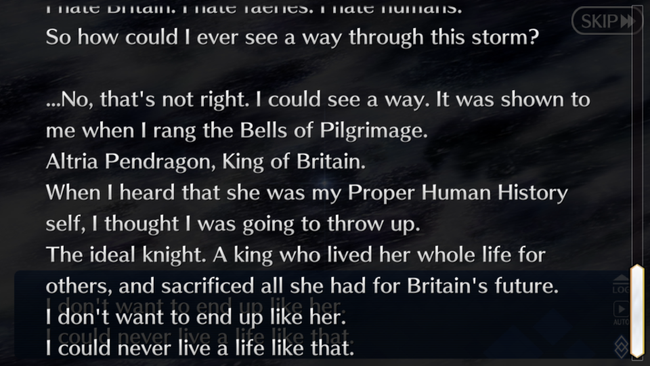
It’s not just Altria’s pilgrimage that makes this all so compelling. I loved almost the entire cast of Avalon le Fae, including Morgan as well. At almost the halfway point of the story, a monstrous calamity appears in Norwich shortly after Altria arrives. This is a pivotal moment in this chapter because the player’s character (I’ll refer to them as Ritsuka from here on out) and the other members of Chaldea are finally reunited with one of the main F/GO characters, Mash, Unfortunately, her memory is still fuzzy from her time in the Nameless Woods when all the Chaldeans first arrived in the British Lostbelt, got separated, and lost their memory temporarily.
Readers have also been seeing Mash’s side of the story and what she’s been experiencing on her own - which provides another perspective that fleshes out other parts of Faerie Britain even further.
In a final desperate attempt to protect Norwich from the calamity, Ritsuka rushes to Mash’s side to support her as she finally remembers Ritsuka before catastrophe strikes. After players overcome the calamity, it’s finally time to celebrate Ritsuka and Mash’s reunion after many hours of being separated, right?
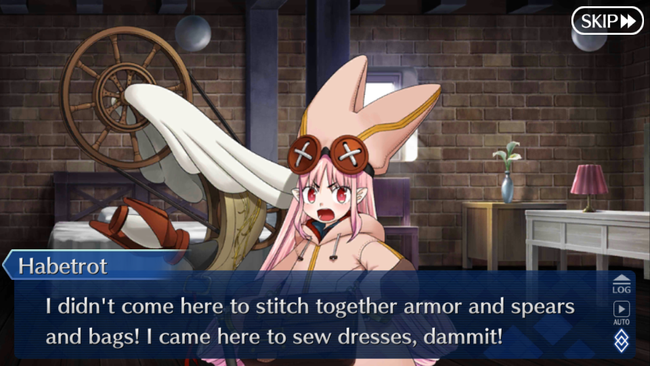
Nope.
Mash is mysteriously transported some place else from Morgan’s water mirror spell as soon as the battle ends, instead of the calamity. In this case, it’s less of being sent some place else and more some time else. Players come to learn later that Mash was sent 2,400 years into the past - 400 years before the Era of the High Queen began.
This serves as an important narrative beat because Mash meets Aesc the Savior, an important historical figure in the British Lostbelt that was vital in establishing the current six-clan structure of the faeries. It’s an intricate look into what happened to Aesc, or as players would come to learn, how Aesc turned into Morgan, and how the Era of the High Queen began as a result. Aesc, now Morgan, was the first faerie of paradise - the first Avalon le Fae.
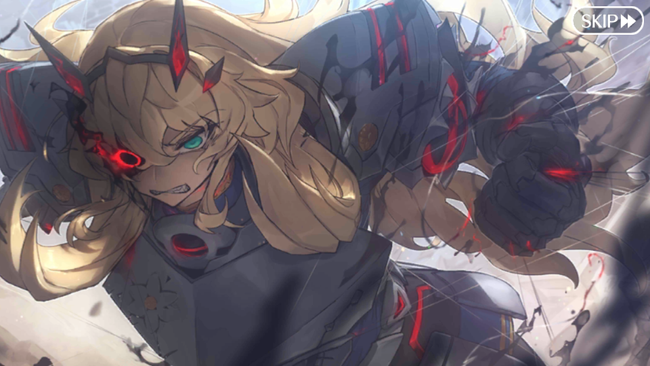
Another faction I really enjoyed learning about were the Tam Lin knights that serve Morgan. They are warriors that have taken up the names of several famous Knights of the Round Table members; they are Tam Lin Gawain, Tam Lin Tristan, and Tam Lin Lancelot. Discovering their true identities is only the beginning. Finding out why they took on their Tam Lin identity, exploring their relationships with other characters in the British Lostbelt, and uncovering their pasts were all pretty amazing.
What’s especially impactful is that none of these characters, and most of the secondary characters, don’t feel one-dimensional. A lot of them don’t feel like throwaway plot devices that are immediately forgotten; the Tam Lin aren’t your villains-of-the-week type characters. They all have a compelling reason for doing what they’re doing.
Tam Lin Lancelot, for instance, has a history with one of my favorite characters in Avalon le Fae, Percival. He is currently the leader of the Round Table Army - the biggest anti-Morgan faction in Faerie Britain. Percival and Tam Lin Lancelot love each other, though not in a typical straightforward romantic sense. It’s closer to a familial sort of bond that they developed as Tam Lin Lancelot taught Percival how to fight when they were younger. The tension they share every time they encounter each other on the battlefield is always intense, but in a way that doesn’t feel corny or repetitive. I truly like how the story takes its time to give readers some insight in their upbringing with several story scenes from both perspectives.
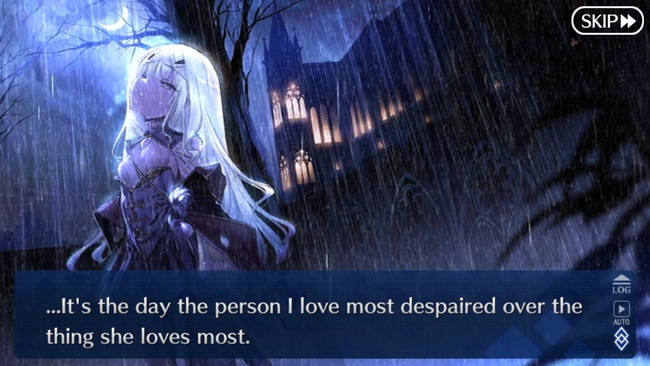
That is perhaps one of the strongest things that Avalon le Fae has going for it narratively. It brings up events from one perspective only to bring it up again much, much later from another perspective that sheds a different light on a situation. It’s crafted very deliberately to challenge your initial expectations with a tonal shift during appropriate moments. Of course, pulling this card repeatedly can be dangerous, especially if such developments betray what has been previously established or foreshadowed beforehand.
Thankfully, Nasu avoids this and the delayed perspective shifts make sense to further develop the reader’s understanding of character motives. Tam Lin Lancelot’s origin story is first told by her as an introductory starting point to her true identity. Many hours later, that same scene is retold by the faerie clan leader that found her and the contrast in their perspectives is enlightening.
It’d be easy to just endlessly gush about so many other characters too - Habetrot, Cnoc na Riabh, Murian, Woodwose, Coral, Gareth and so on. There are also a handful of ongoing story arcs that come full circle in this Lostbelt that involve a few of the Crypters and another long-standing enemy. Explaining all of that would take way too long, so all I can reasonably say in a timely fashion is that they were all pulled off very well.
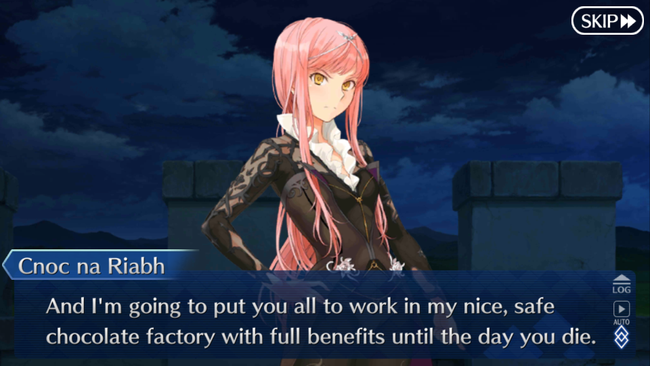
Finally, a major component of why I love the story of Avalon le Fae is a character named Oberon. He is one of the first characters you meet shortly after you enter the British Lostbelt. Altria’s pilgrimage is successful largely thanks to Oberon; the whimsical lad seems to have a thorough understanding of the prophecy that lays out Altria’s mission with the fate of Britain.
He confronts Ritsuka early on about whether they would wholeheartedly support Altria in completing her goals no matter what because Ritsuka was constantly torn between finding Mash as fast as possible or helping Altria in her time of need. When things looked uncertain or when the path was foggy, Oberon provided some wholesome support in urging the party on. His vast knowledge of Faerie Britain shed a lot of insight about the ongoing political tensions between the faerie clans.
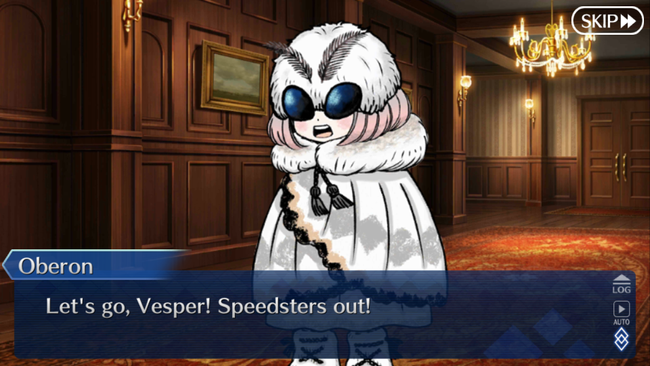
Oberon is the type of character that’s essential for a story as tonally heavy as Avalon le Fae. He provides a bit of comic relief, a lot of exposition to provide knowledge that characters lack, and a skilled diplomat to guide our characters throughout the vast, foreign land.
All the hours spent with Oberon throughout Faerie Britain were a lot of fun - and they were also a lie. It’s not really a secret anymore that Oberon is not entirely truthful about his real intentions; the Avalon le Fae chapter was initially released on F/GO’s Japanese release two years ago, so the truth about Oberon is far from being a mystery any longer. His gacha banner teases it as well, since his character release debuts an entire new class, the Pretender.
The mystery behind Oberon’s birth and the methods he took to ensure Altria’s success is entwined with what becomes of the British Lostbelt. It’s a tale of villainy that amalgamates the nature of Oberon’s legend in A Midnight Summer’s Dream with a significant figure from Arthurian legend to provide, once again, a shift in perspective in what we normally experienced versus what Oberon perceived.
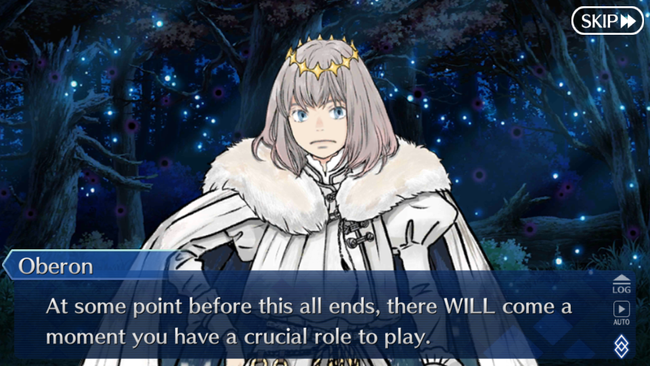
As the game eloquently puts it:
There are those who serve as inspiration to others and usher in new ages by doing good deeds: Heroes. And there are those who help good things come about by serving as necessary obstacles: Anti-Heroes, the counter to heroes. Among these, there were doubtless some Anti-Heroes who accomplished great feats through treachery.
An imposter - no, someone who achieved greater power and feats than even one who is genuine by deceiving others about the nature of their very soul. Such an Anti-Hero would not be an Avenger, or a Ruler. Nor would they be an entity from an outer zone, or a distinct, separate personality within a person.
No, they would be a Pretender - a Heroic Spirit mired in falsehoods who fights entire worlds rather than people or beasts.
I wish there was a way for more people to experience Avalon le Fae without having to resort to watching a video, or god forbid, installing and playing a lot of F/GO to even begin reading it. There are still a lot of layers I didn’t touch upon and I genuinely believe this is one of the best stories to come out of a video game in 2023. It’s a breath of fresh air from a lot of modern narratives that only come off as skin deep or afterthoughts.
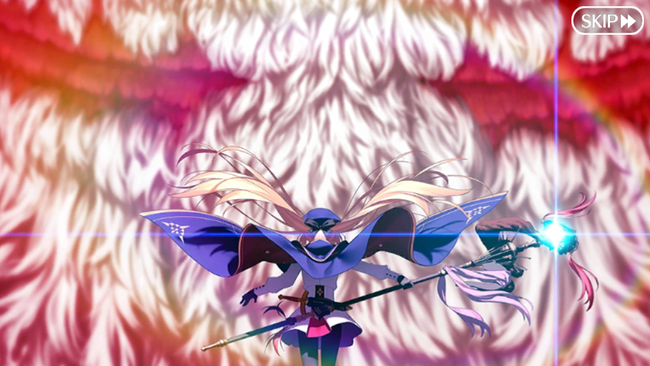
Avalon le Fae may be absurdly lengthy as I poured around 45-50 hours of just reading this single chapter alone, but it manages to not be complex for complexity’s sake. There are a lot of thoughtful aspects that shape an entire world that should have never existed in the first place. Fate/Grand Order's Avalon le Fae chapter is secretly one of the best stories in video games this year.